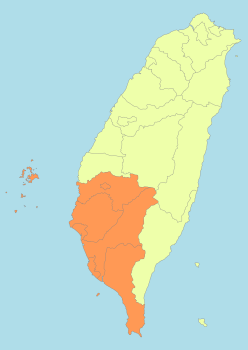Saturday morning, February 6, Taiwan was struck with an earthquake that registered with a magnitude of 6.4.
 The earthquake occurred in the early morning, around 4 a.m., when the majority of people were asleep in their homes. According to National Public Radio (NPR), the epicenter of the earthquake was in South Taiwan, near Tainan City. The earthquake came at the beginning of the Lunar New Year Holiday, one of the country’s biggest holidays, and the weekend before the Chinese New Year begins. CNN reported on Saturday morning some 900,000 homes were without power and 400,000 homes were experiencing water outages.
The earthquake occurred in the early morning, around 4 a.m., when the majority of people were asleep in their homes. According to National Public Radio (NPR), the epicenter of the earthquake was in South Taiwan, near Tainan City. The earthquake came at the beginning of the Lunar New Year Holiday, one of the country’s biggest holidays, and the weekend before the Chinese New Year begins. CNN reported on Saturday morning some 900,000 homes were without power and 400,000 homes were experiencing water outages.
According to BBC News Tuesday morning brought the death toll to more than 40 and accounted for more than 100 people missing. The New York Times reported that 109 of the missing are buried in the Wei-guan Golden Dragon Building and BBC said that 39 of the reported deceased were residents of the building. Sunday morning, officials used sophisticated infrared sensors in an attempt to detect the amount of people still within the building, showing that 130 people were still trapped inside.
The building is a 17-story apartment complex that almost completely collapsed during the quake, with only four stories remaining. The Washington Post described the building as having, “folded like an accordion onto its side after the quake struck.” While the building was one of 11 to collapse after the earthquake, it is the only high-rise building to have completely crumbled post-quake. The collapse has made it difficult and nearly impossible for rescuers to get to trapped residents. In addition to the collapse, a water main, which broke after the quake, flooded the bottom stories. This has created low temperatures, putting trapped residents at risk of hypothermia.
The building, which was built on top of a rice field in 1994, has been the center of controversy since the quake. The building’s architecture and construction has been called into question, resulting in the arrest of three of its former executives. The former chairman of the company called Wei-Guan Construction (which is no longer in existence) and two other executives were detained on charges of professional negligence.
As reported by BBC, residents and observers were shocked to see blue tin cans embedded in the building’s concrete pillars, seemingly used as a filler. An engineer was quoted in a CNN article as saying using tin cans, “for such purposes in construction was not illegal prior to September 1999, but since then styrofoam and formwork boards have been used instead.”
The developer of the building, Mr. Lin, has apparently been involved in many business disputes throughout the years, according to The New York Times. Lin has changed his name as many as four times over the years, which arouses suspicions, because Taiwan does not officially allow individuals to change their name more than twice. Lin did not live in the building, and despite many people searching for him, he has yet to be found.

